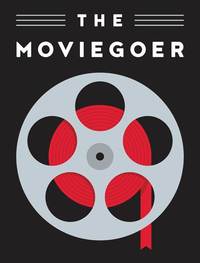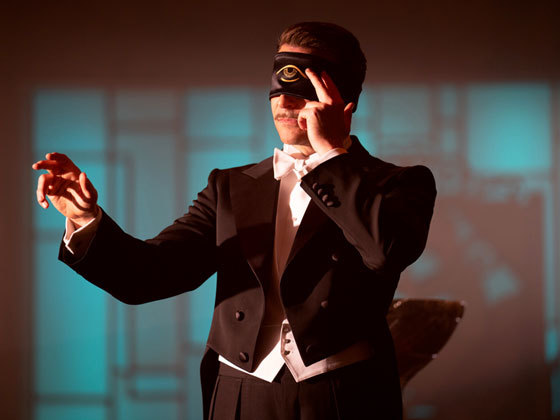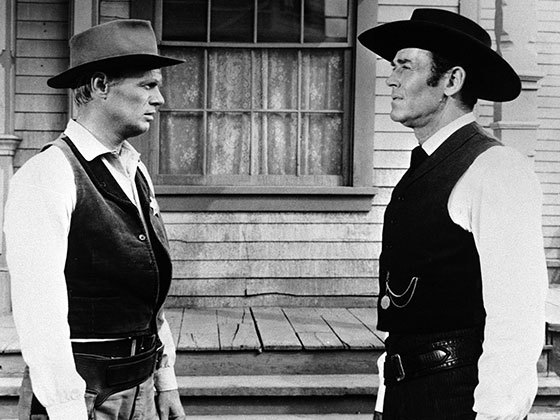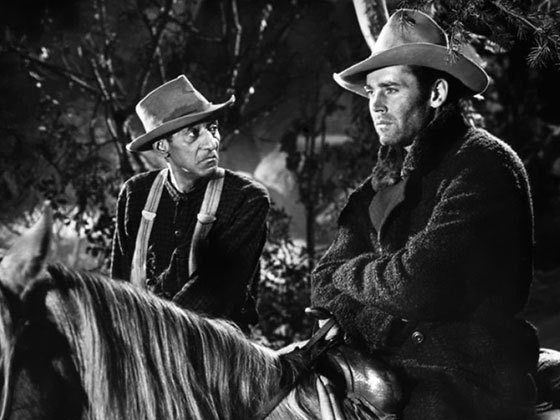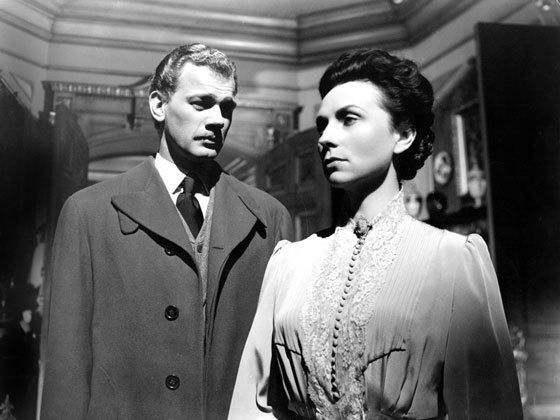By Charles McGrath
Starring William Powell and Myrna Loy as the effervescent husband and wife team of Nick and Nora Charles, this adaptation of Dashiell Hammett’s novel is a genre-cracking gem, blending high-society comedy with the conventions of the classic detective story.
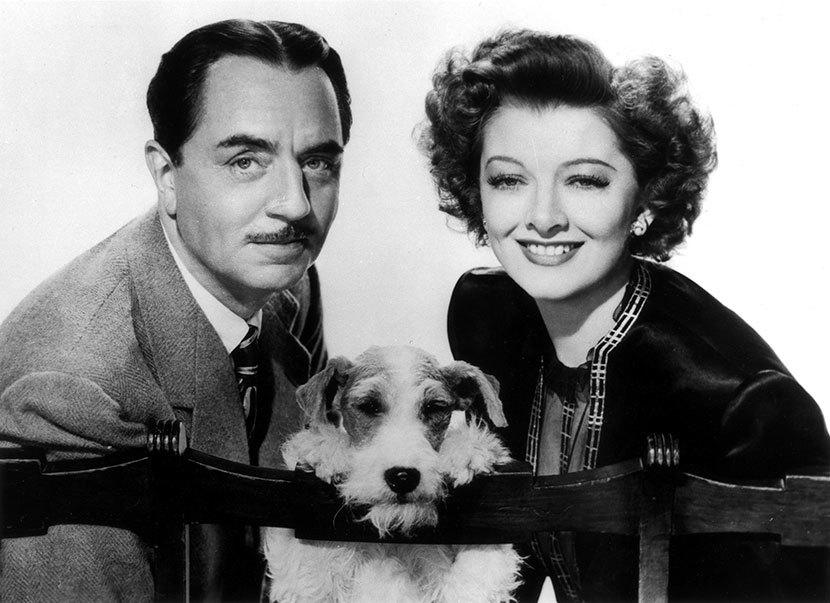
The Thin Man, published in 1933, was the last book Dashiell Hammett wrote. He finished it, with unusual discipline, in just a couple of months, and it couldn’t be more different from the noirish, world-weary crime thrillers that made his reputation. It’s less a murder mystery, really, than a high-society comedy of manners with some dead bodies lurking in the background. The hero, Nick Charles, is a former detective who has happily given up gumshoeing for marriage with a young heiress, and gets drawn back into his old trade only reluctantly. What he really wants is to enjoy a weeklong Christmas holiday of heavy-duty partying in a swanky New York hotel suite.
The 1934 movie version, directed by W. S. Van Dyke, pays more attention than the book does to detective-story convention. There’s a prologue, in which we actually get to see the eccentric, absent-minded inventor whose disappearance sets the plot going. (He, by the way, and not Nick, is the thin man of the title, but that distinction eventually got lost.) There’s a madcap, Agatha Christie-like dinner party at the end, where a tuxedo-clad Nick invites all the suspects and, while policemen disguised as waiters hover around, proceeds to unravel the mystery from his place at the head of the table. And in between, he even gets out of his dressing gown and goes out to do some real sleuthing—something never required of him in the book, where all the clues fall into his lap.
| READ THE BOOK |
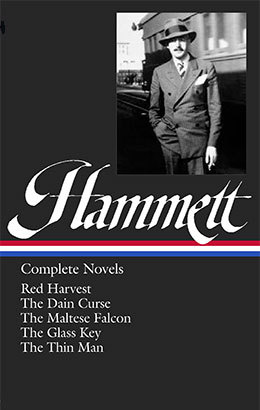 |
| Dashiell Hammett: Complete Novels |
But in another way the movie is even more original and genre-cracking than the novel. It takes the bantering, flirty relationship of Nick and his wife, Nora, and makes it the real point of the story, so that crime-solving here turns into something more nearly like screwball comedy. The script, by Albert Hackett and Frances Goodrich—themselves a husband and wife team—takes all Hammett’s best lines and improves on them, and then adds even better ones of its own. “I read where you were shot five times in the tabloids,” Nora says, referring to newspaper accounts of an intruder in their hotel room. “He didn’t come anywhere near my tabloids,” Nick replies.
The real genius of the movie, though, was in the casting of William Powell and Myrna Loy. They were a surprising choice. He was forty-two at the time, a veteran of the silents and of some B-level talkies who had begun to make a name for himself in a couple of Kay Francis vehicles and four movies in which he played the foppish detective Philo Vance. He wasn’t bad-looking, but he wasn’t leading-man handsome. The thin little mustache he wears in The Thin Man almost looks paste-on. She was twenty-nine, and because of her wide-set, almond-shaped eyes, had a history of being miscast as an Asian femme fatale. They had appeared together in Van Dyke’s previous picture, Manhattan Melodrama (the movie, trivia buffs are always pointing out, that John Dillinger was shot coming out of), and in this one, building on their rapport, they really clicked. He has an easy, unstudied elegance, and she a sexy alertness. They’re so convincingly rich and clever and carefree-seeming that they practically effervesce. (Another inspired casting move was hiring a wire-haired terrier to play the Charleses’ dog, Asta, a schnauzer in the book. The pooch was so winning that soon everybody wanted one.)
The movie, like the novel, requires Nick and Nora to be half in the bag most of the time. They’re seldom without a glass in hand. When we first see him, he’s lecturing a bartender about how to shake a Martini, and when she shows up, after a spectacular pratfall, she demands that a row of drinks be set up so she can catch up. They have eye-openers first thing in the morning, and sometimes wake up for a cocktail in the middle of the night.
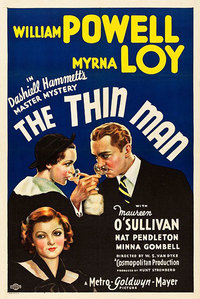
Lillian Hellman, to whom The Thin Man is dedicated, later said that the marriage of Nick and Nora was based on her longtime relationship with Hammett, and she’s probably right, except more about the boozing part than the charming repartee. They were both serious, quarrelsome drinkers and it was alcoholism that kept Hammett from writing any more books after The Thin Man. But people in the thirties thought drunkenness was much funnier than we do now, and in The Thin Man, at least, you can see why. “Tight” is the word Nick and Nora use to describe their usual condition, but in fact drink makes them the opposite. He has a wonderful rubbery walk, and a way of ever so slightly slurring his words (which must have been much harder to pull off than full-on drunk-acting). And the great joke, or trick, of the movie is that drink does nothing to dull their thought processes—either their wisecracking or his crime-solving. It only makes them smarter.
Van Dyke, who was famously fast and efficient, finished the movie with what now seems unimaginable swiftness—in just a little over two weeks—and when the movie was released it immediately became a huge hit. Maybe even more than MGM anticipated, it was perfect Depression-era escapism: one of those thirties movies that take place in drawing rooms where the ceilings are about twenty feet high, where men are always in formal wear and women, even in the afternoon, wear floor-length lounge gowns and speak in that bright, quick, affected accent that no real American ever used.
| BUY THE BOXED SET |
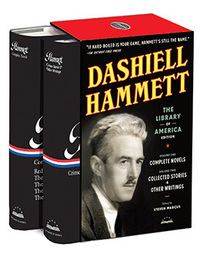 |
| Dashiell Hammett: The Library of America Collection (Two volumes) |
The movie was so successful that it spawned five sequels. None of them is quite as good as the original, but they proved a reliable vehicle for Powell and Loy, whom audiences couldn’t get enough of, and for a parade of gifted character actors. And after the movie franchise finally petered out, there were even a couple of TV spinoffs. The long afterlife of The Thin Man eventually had less to do with escapism than with the way it offered an alternative to the prevailing model of the movie detective: solitary, cynical, hardboiled—Bogart’s Sam Spade, for example, another Hammett creation. Now there was the crime-solving couple, for whom the business was fun, not an existential chore.
Even more than that, The Thin Man helped introduce into American popular culture a new model of marriage itself. Nick does most of the actual detecting, but in every other way he and Nora are equals, and they enjoy it that way. They don’t just swoon over each other; they banter and tease and test each other’s limits, the way real couples do.
And they have sex. The first edition of the novel, which was later toned down, caused a stir by including a scene in which Nora asks Nick whether he got an erection while struggling with an attractive, overwrought woman who is one of the suspects. “A little,” he admits. The movie never goes that far but leaves us in no doubt that they are sexual creatures and that their affection for one another goes beyond just trading one-liners. You can see it in the way she looks at him when she’s worried about his safety, or in the way his gaze lingers on her when she leaves the room.
The movie ends with a scene on a train. Nick and Nora are on their way home, to California, and, celebrating the solution of the case, he gets even squiffier than usual. Back in their sleeping car, Nora slips into the bottom berth and says she’ll sleep with Asta. A grinning Nick folds his tall frame over her (Powell was six feet, and towered over the petite Loy), gently removes the dog, and places him on the top bunk. There’s no doubt about what happens next. The only question is whether or not they remove those ridiculous silk pajamas.
Original trailer for The Thin Man (3:16)
The Thin Man (1934). Directed by W. S. Van Dyke. Written by Albert Hackett and Frances Goodrich, from Dashiell Hammett’s novel. With William Powell, Myrna Loy, Maureen O’Sullivan, Cesar Romero.
Buy the DVD • Watch on Amazon • Watch on iTunes • Watch on Vudu
Charles McGrath, the former deputy editor of The New Yorker and editor of The New York Times Book Review, is now a contributing writer for the Times. He is working on an edition of John O’Hara’s short stories for the Library of America.
The Moviegoer, a biweekly feature from Library of America, showcases leading writers revisiting memorable films to watch or watch again, all inspired by classic works of American literature.
